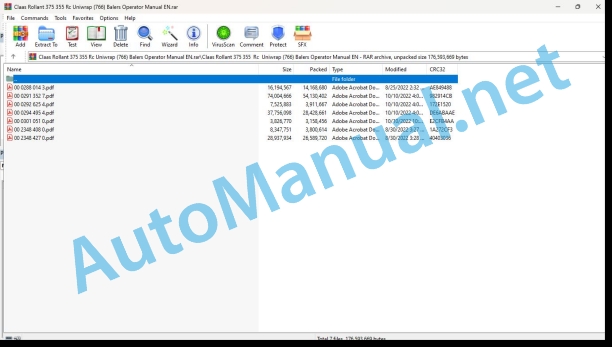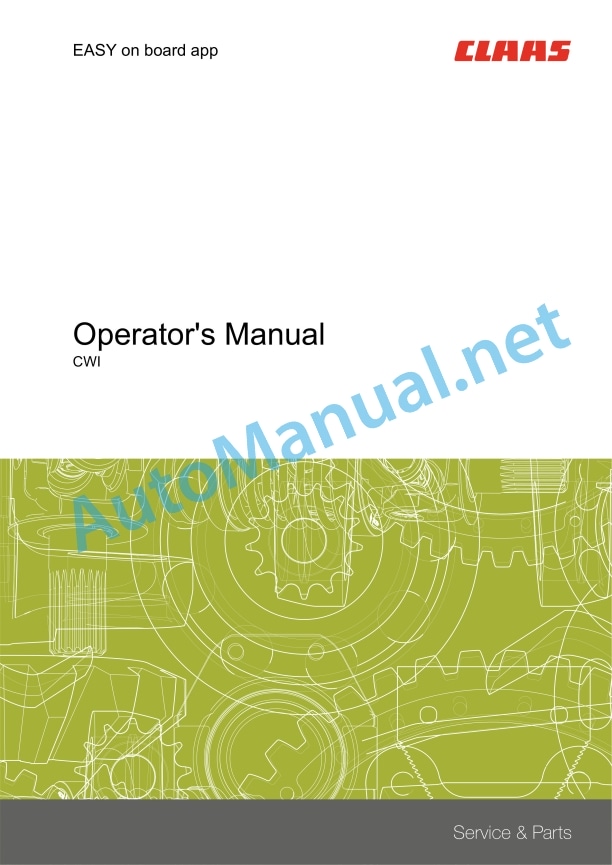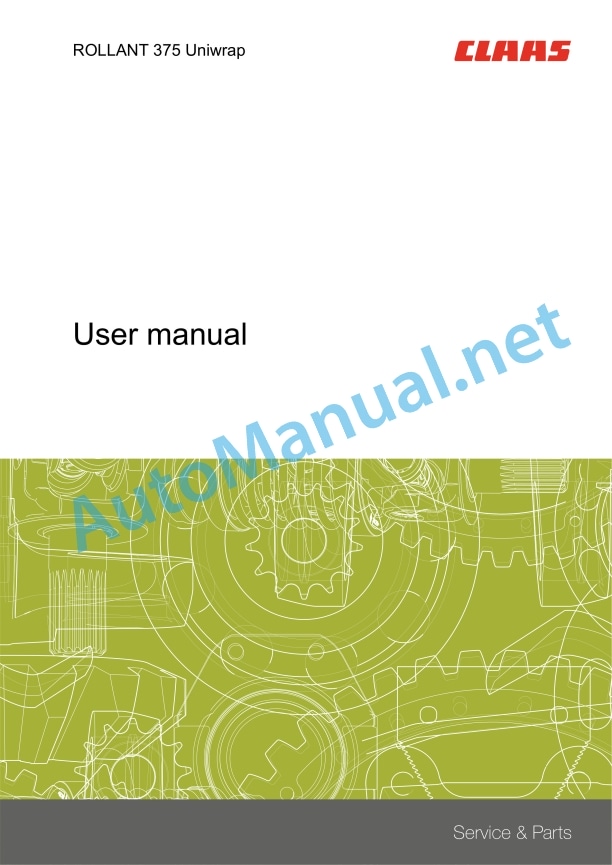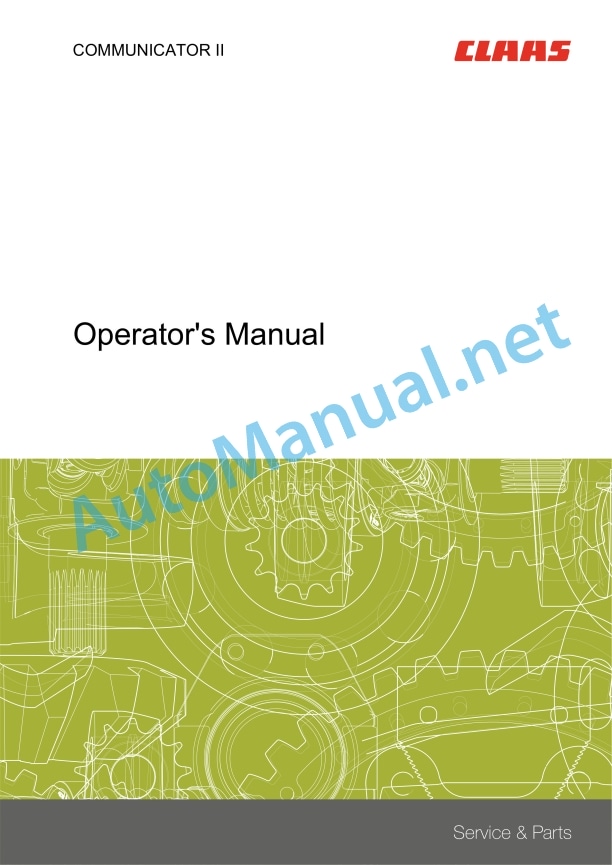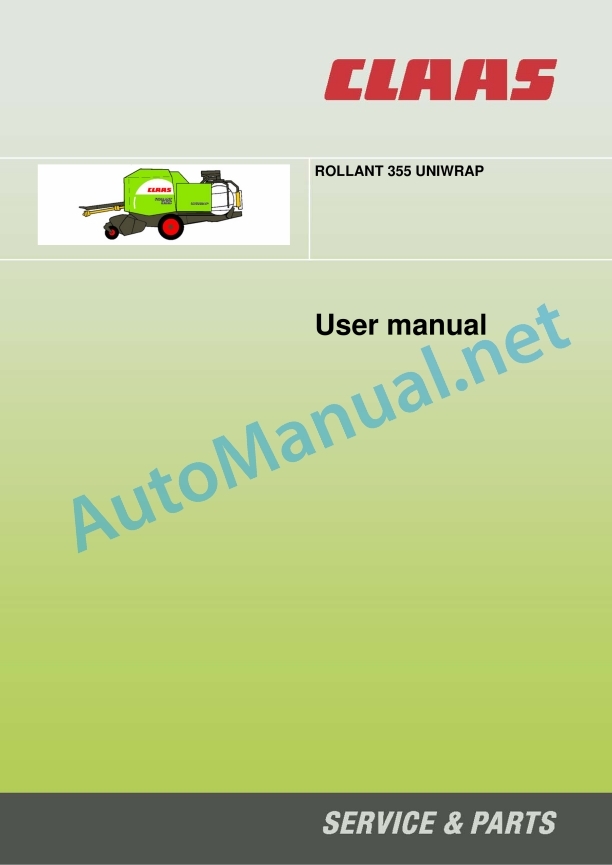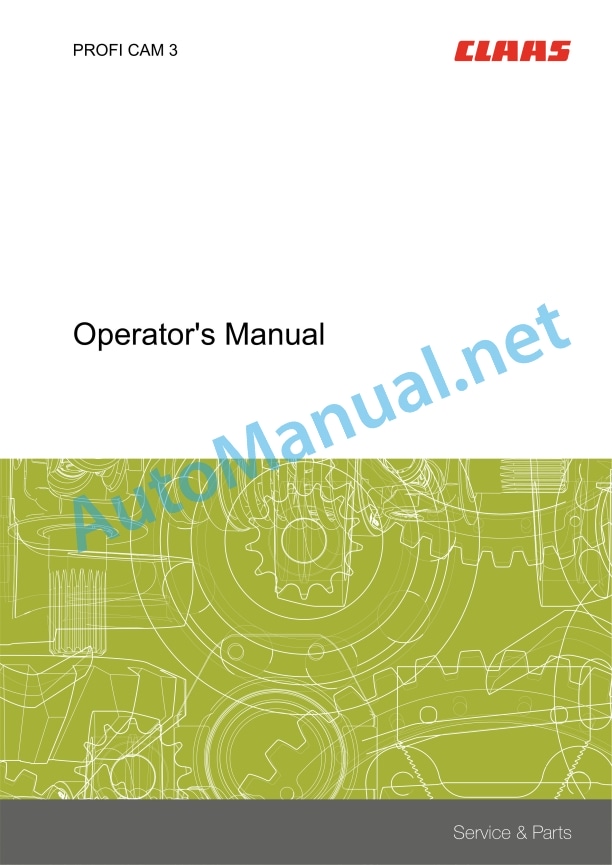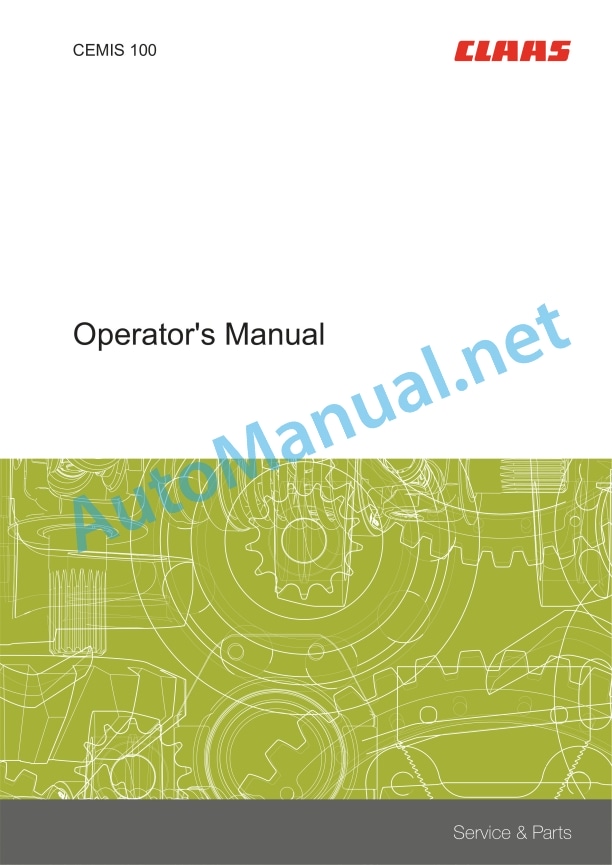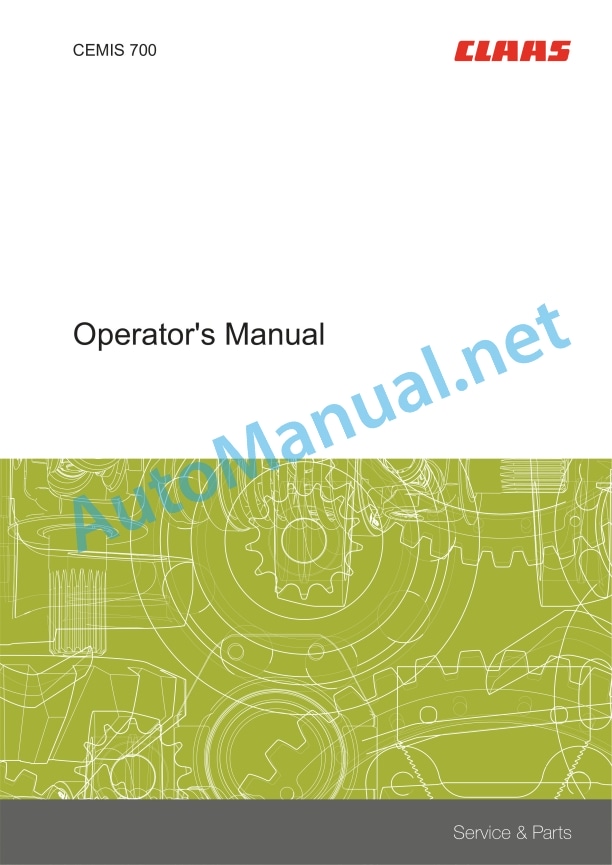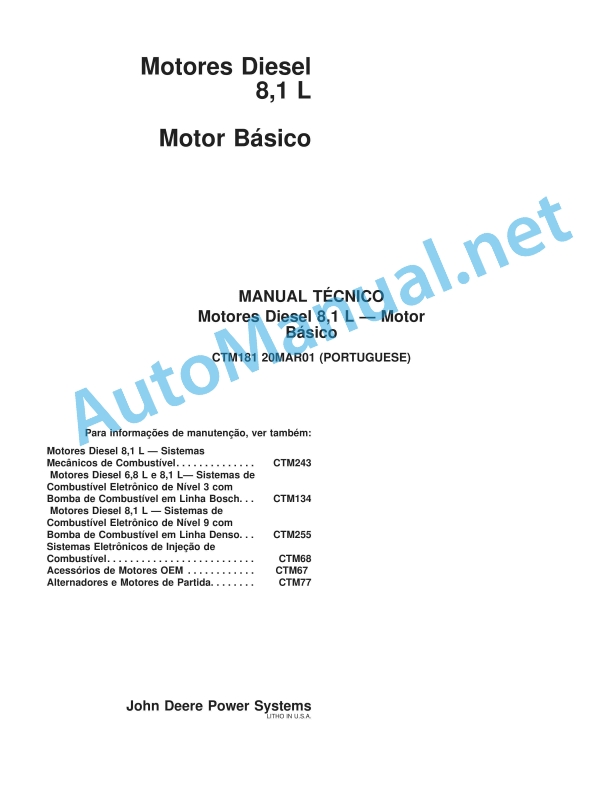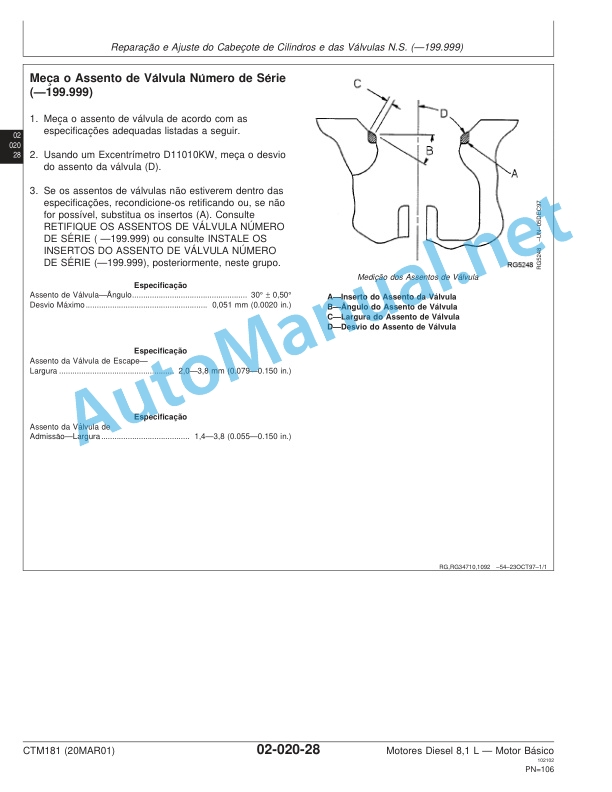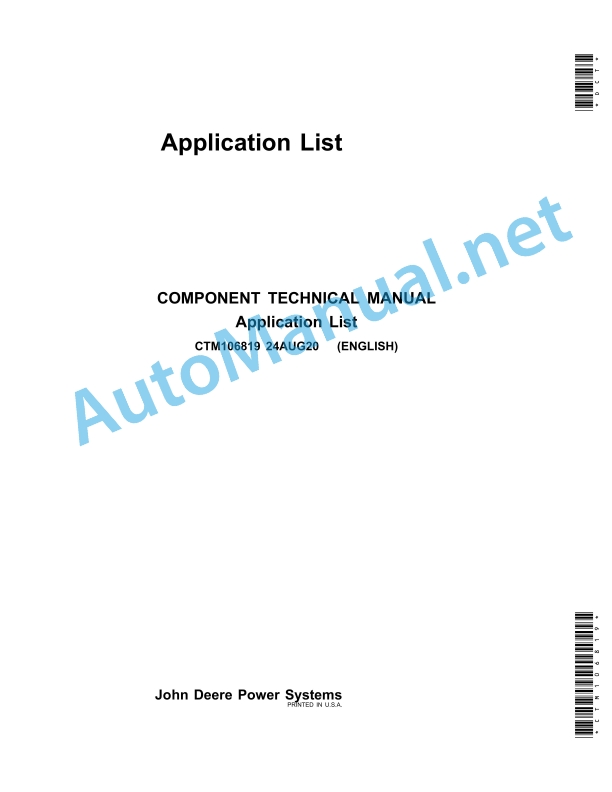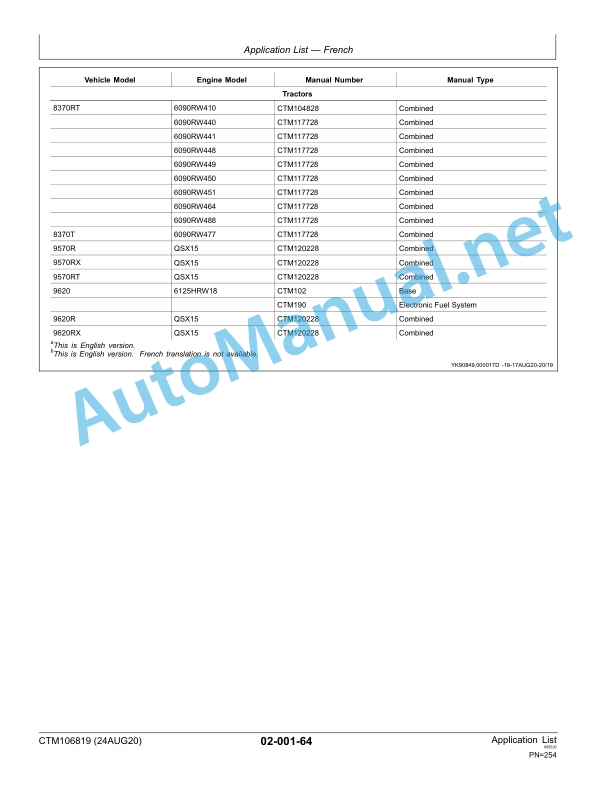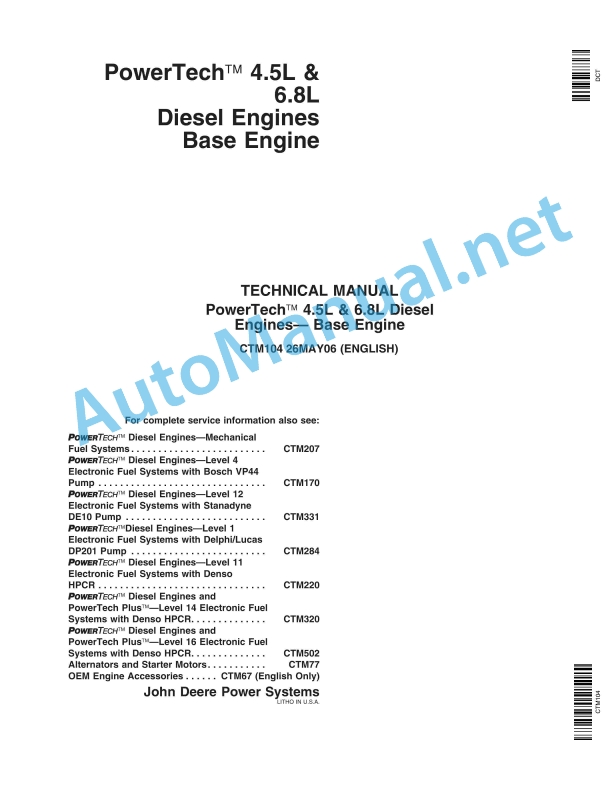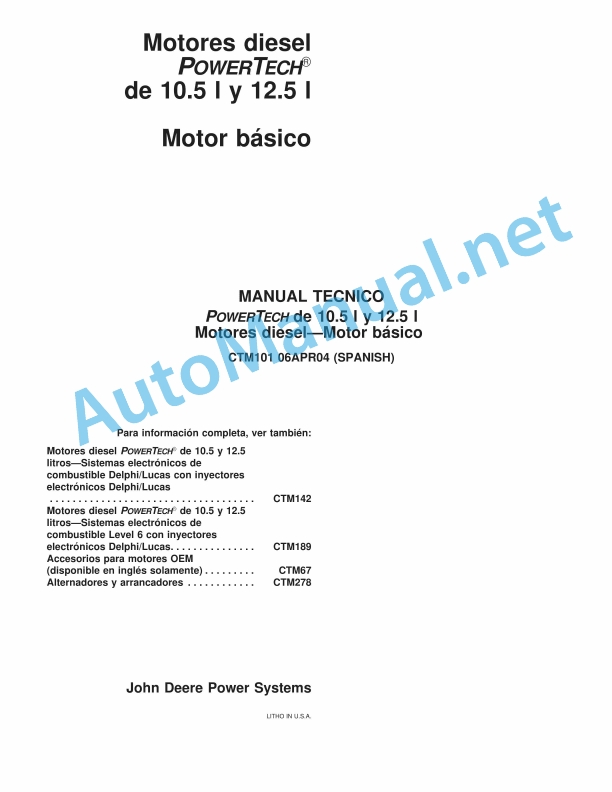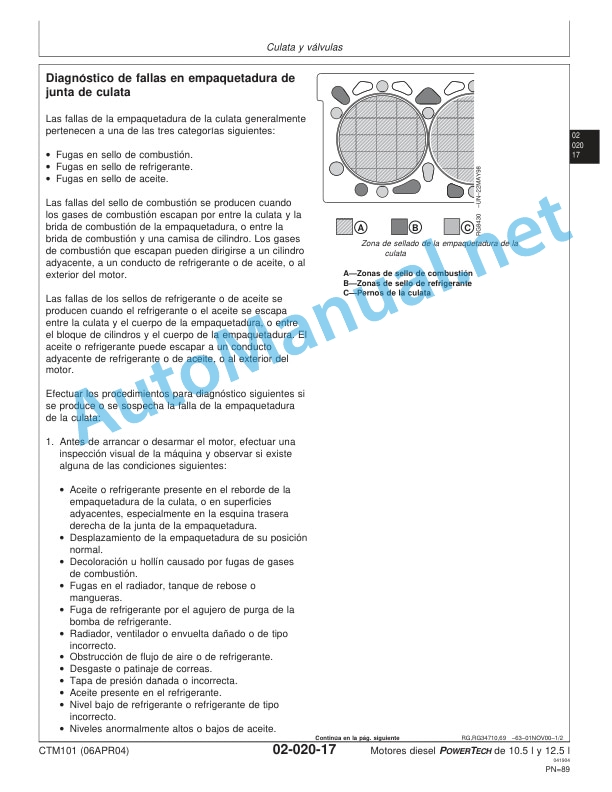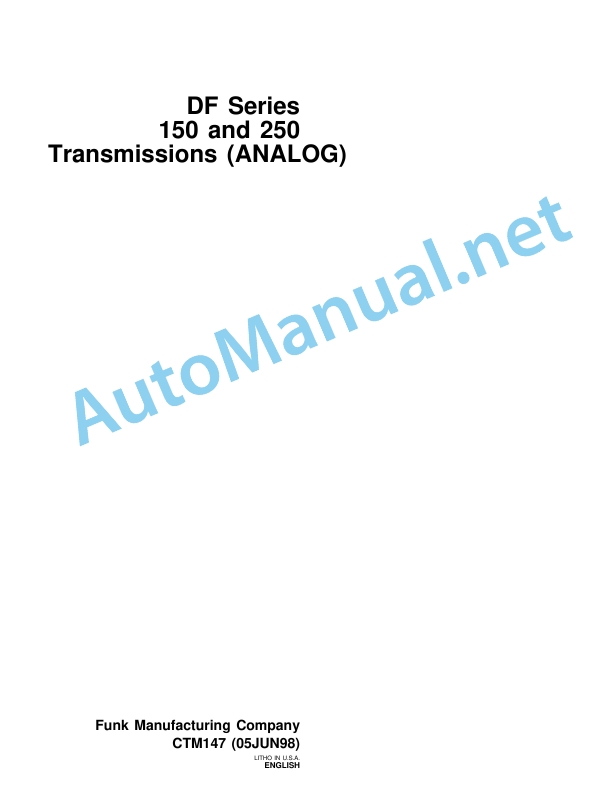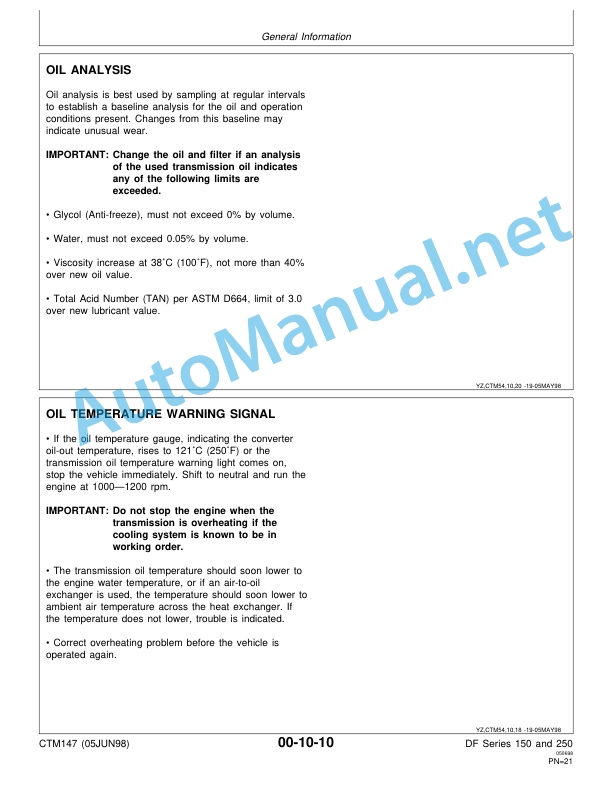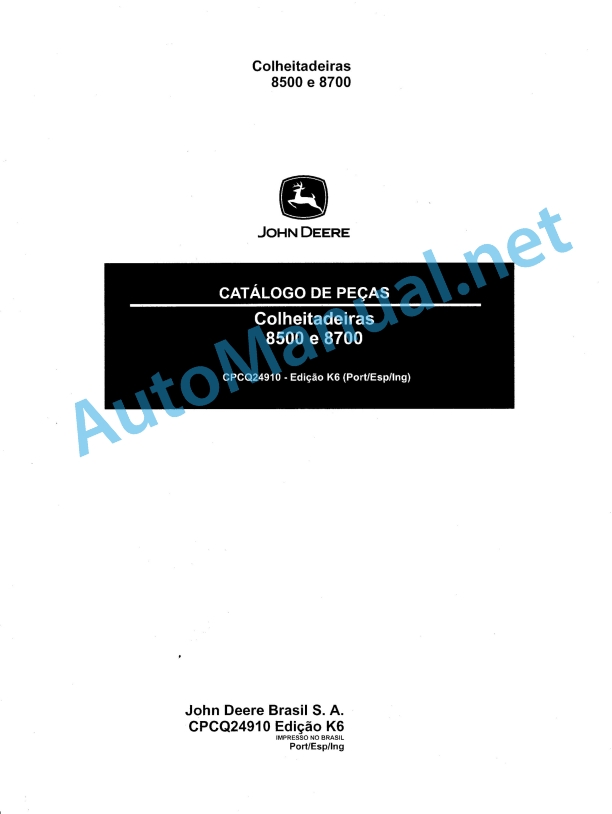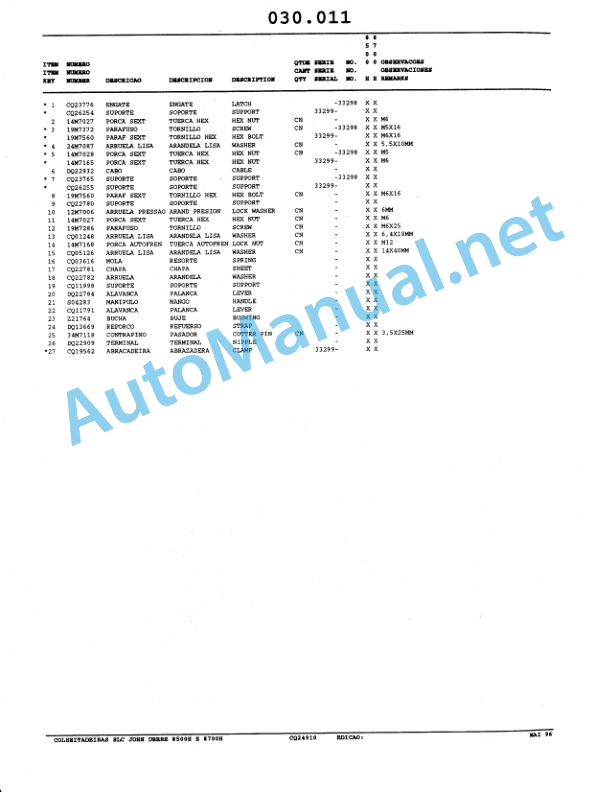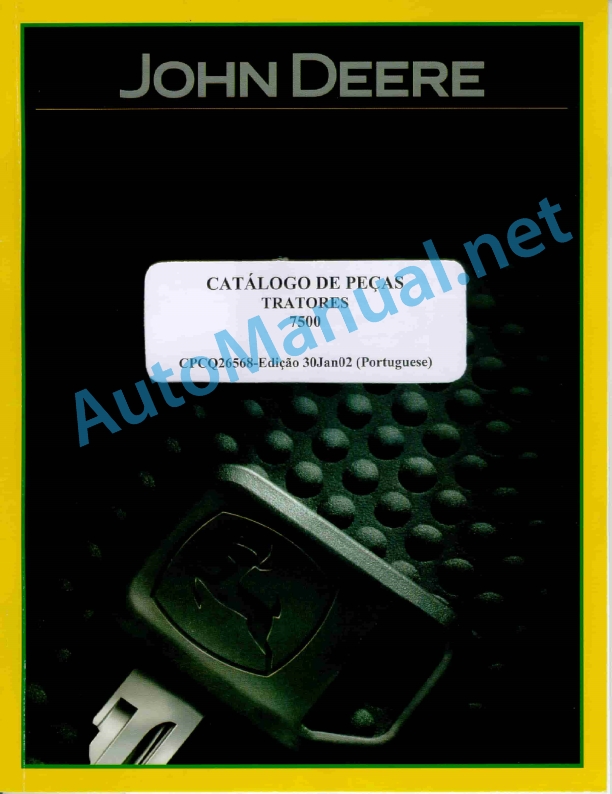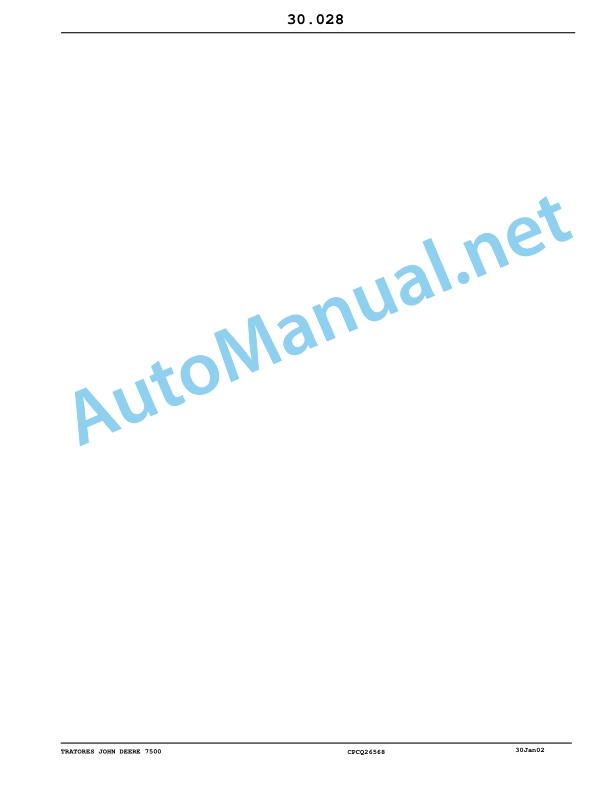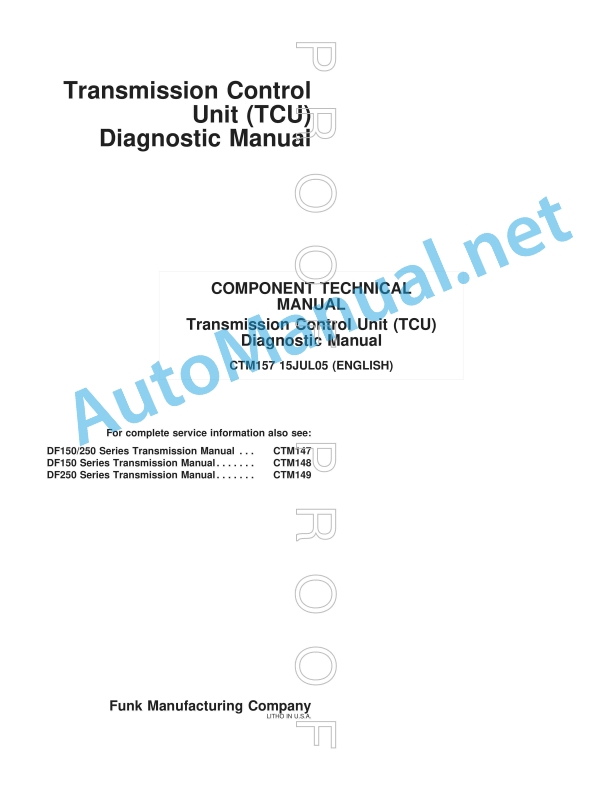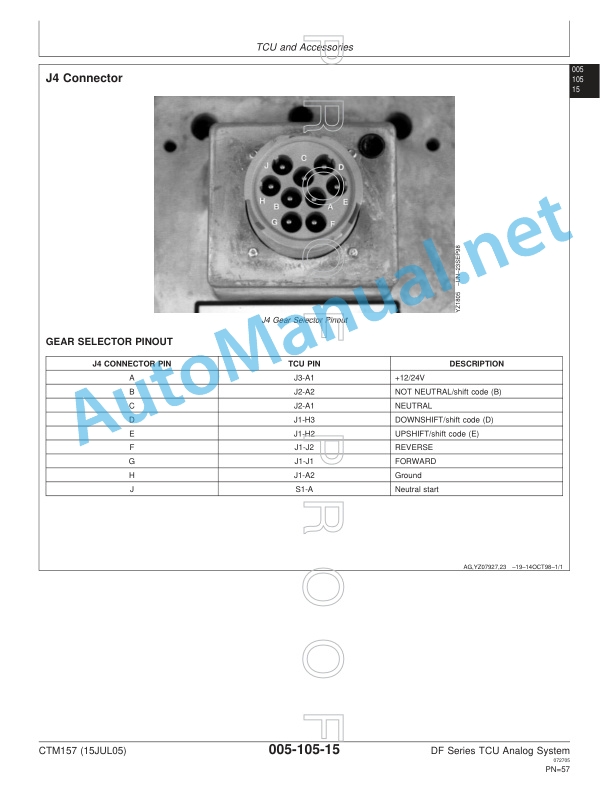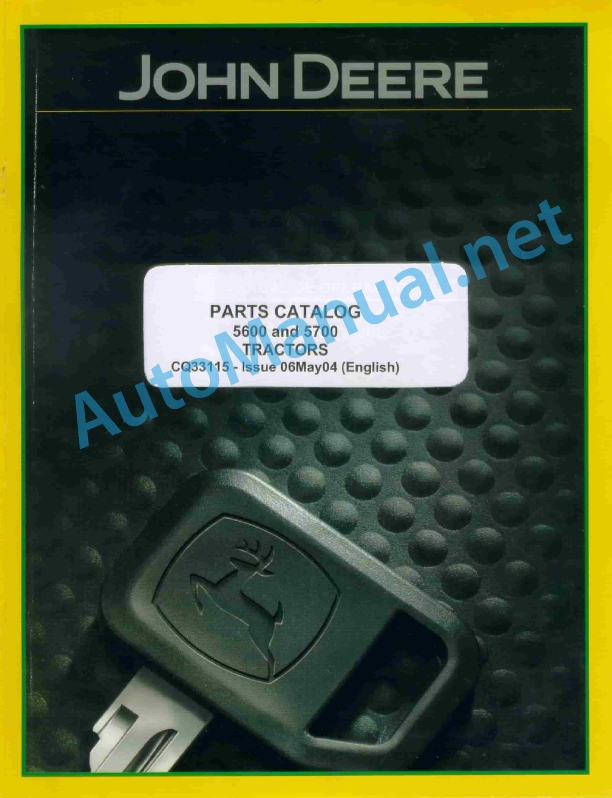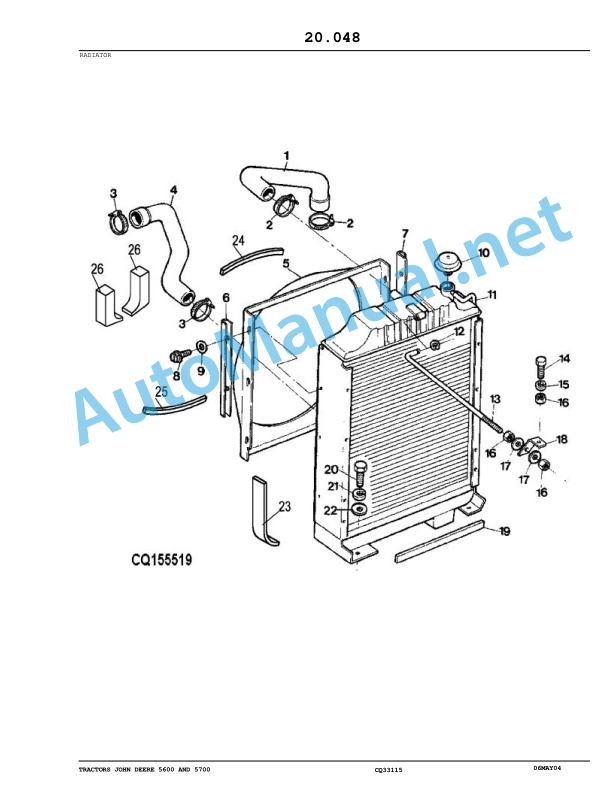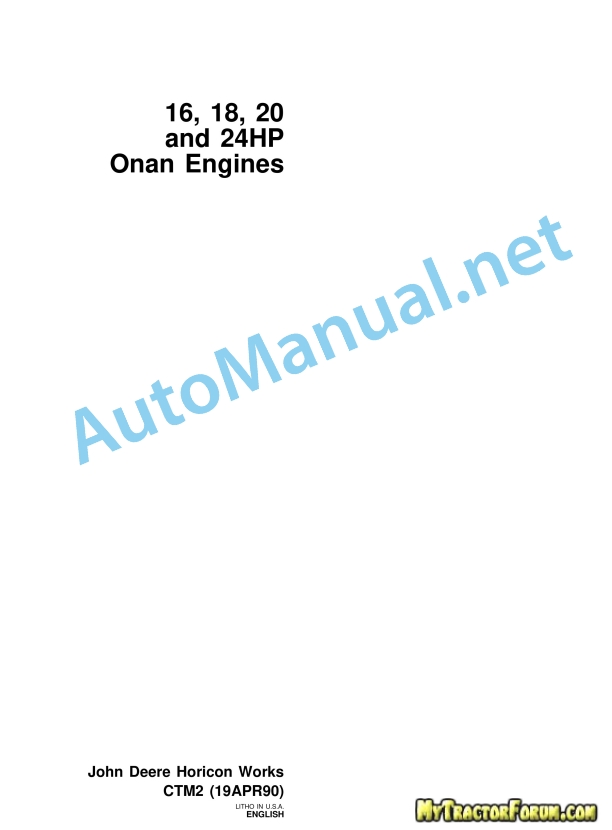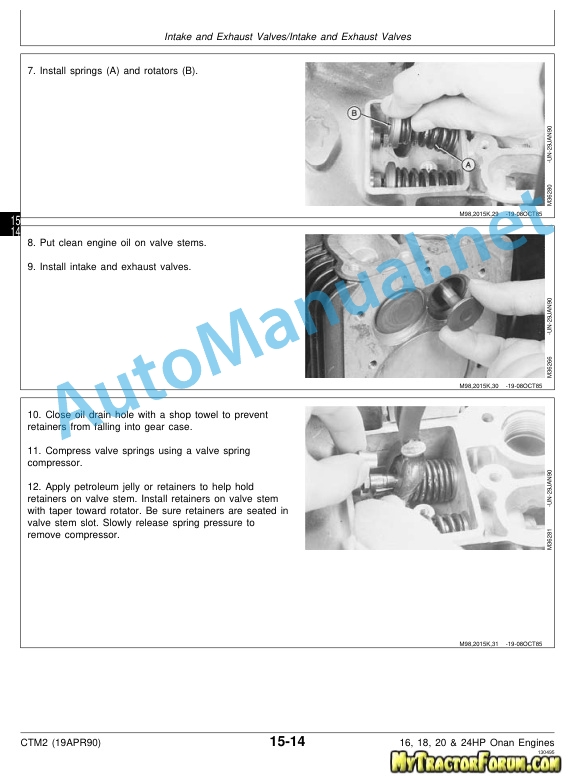Claas Rollant 375 355 Rc Uniwrap (766) Balers Operator Manual EN
$50.00
- Model: Rollant 375 355 Rc Uniwrap (766) Balers
- Type Of Manual: Operator Manual
- Language: EN
- Format: PDF(s)
- Size: 128 MB
File List:
00 0288 014 3.pdf
00 0291 352 7.pdf
00 0292 625 4.pdf
00 0294 495 4.pdf
00 0301 051 0.pdf
00 2348 408 0.pdf
00 2348 427 0.pdf
00 0288 014 3.pdf:
EASY on board app
Table of contents
1 Introduction
1.1 General information
1.1.1 Validity of the manual
1.1.2 Information about this Operator’s Manual
1.1.3 Symbols and notes
1.1.4 Qualified specialist workshop
1.1.5 Maintenance notes
1.1.6 Notes on warranty
1.1.7 Spare parts and technical questions
1.1.8 Technical requirements
1.2 Intended use
1.2.1 Intended use
1.2.2 Reasonably foreseeable misuse
2.1 Identifying warnings
2.1.1 Hazard signs
2.1.2 Signal word
2.2 Safety rules
2.2.1 Meaning of Operator’s Manual
2.2.2 Requirements made on all persons working with the product
2.2.3 Hazard areas
2.2.4 Check interactions with self-propelled machines / tractors and implements
2.2.5 Structural changes
2.2.6 Optional equipment and spare parts
2.2.7 Technical status
2.2.8 Hazard caused by damage to the product
2.2.9 Visibility of work area
2.2.10 Glare and reflections
2.2.11 Unintentional triggering of functions
2.2.12 Hazards caused by signal tones
2.2.13 Unauthorised use
2.2.14 Use of mobile terminal outside the cab
2.2.15 Follow the safety instructions
2.2.16 Respecting technical limit values
2.2.17 Preparing the product for road travel
2.2.18 Hazards when driving on the road and on the field
2.2.19 Hazards when driving on the road with an ISOBUS implement
2.2.20 Switching off the mobile terminal while driving
2.2.21 Hazards from disturbance of WLAN environment
2.2.22 Hazards from covering up the App
2.2.23 Hazards caused by malfunctions of the app
2.2.24 Raised machine parts and loads
3 Product description
3.1 Overview and method of operation
3.1.1 Overview of CWI
3.1.2 Functions of CWI
3.2 Identification plates and identification numbers
3.2.1 CWI identification plate
3.3 Information on the product
3.3.1 Factory settings
3.3.2 Software and hardware version
3.3.3 Seal on the CWI
4 Operating and display elements
4.1 CLAAS Wireless Interface (CWI)
4.1.1 CWI operating elements
4.2 CWI Setup App
4.2.1 Overview of screen
4.2.2 Buttons
4.2.3
4.2.4
4.2.5
5 Technical specifications
5.1 CLAAS Wireless Interface (CWI)
5.1.1 Specification
6 Preparing the product
6.1 Installing the product
6.1.1 Installing the CWI Setup app
6.1.2 Installing the EASY on board app
6.1.3 Connecting the tablet
7 Operation
7.1 Initial operation
7.1.1 Establishing the WLAN connection for the first time
7.1.2 Changing factory settings
7.1.3 Establishing the WLAN connection
7.2 CWI Setup App
7.2.1 Calling up menus
7.2.2 Establishing a secure data connection
7.2.3 Deleting a secure data connection
7.2.4 Displaying the software version
7.3 CWI Setup – Settings
7.3.1 Changing settings
7.3.2 Switching LEDs on and off
7.4 CWI setup – Advanced settings
7.4.1 Deleting the connection partner in CWI
7.4.2 Deleting the connection partner on the tablet
7.4.3 Resetting the CWI to factory settings
7.4.4 Resetting the tablet to factory settings
7.4.5 Switching the CAN filter on and off
7.5 EASY on board App
7.5.1 Launching Operator’s Manual
8 Faults and remedies
8.1 Overview of problems
8.1.1 CWI faults
8.1.2 Fault message: USB charging connection was disconnected
8.1.3 Fault message: Tablet outside WLAN reception area
8.1.4 Fault message: Screen locked
9 Maintenance
9.1 Maintenance schedules
9.1.1 Daily
9.2 Tablet
9.2.1 Cleaning the tablet
9.2.2 Downloading software updates
9.2.3 Updating the operating system
10 Putting out of operation and disposal
10.1 General information
10.1.1 Decommissioning and disposal
11 EC declaration of conformity
11.1 CLAAS Wireless Interface (CWI)
11.1.1 EU Declaration of conformity
12 Technical terms and abbreviations
12.1 Terms and explanations
12.1.1 Abbreviations
12.1.2 Technical terms
00 0291 352 7.pdf:
ROLLANT 375 Uniwrap
Table of contents
1 Introduction
1.1 General information
1.1.1 Manual validity
1.1.2 Information about this Operator’s Manual
1.1.3 Symbols and notes
1.1.4 Optional equipment
1.1.5 Qualified specialist workshop
1.1.6 Maintenance notes
1.1.7 Notes on warranty
1.1.8 Spare parts and technical questions
1.2 Intended use
1.2.1 Using in line with intended usage
1.2.2 Reasonably foreseeable improper usage
2.1 Identifying warnings
2.1.1 Hazard signs
2.1.2 Signal word
2.2 Safety rules
2.2.1 Importance of Operator’s Manual
2.2.2 Observe the safety decals and warnings
2.2.3 Requirements for all persons working with the machine
2.2.4 Children in danger
2.2.5 Hazard areas
2.2.6 Staying between the tractor and the machine
2.2.7 Persons riding on the machine
2.2.8 Hitching the tractor to the machine
2.2.9 Risk of injury from rotating shafts
2.2.10 Structural changes
2.2.11 Optional equipment and spare parts
2.2.12 Controlling the tractor when it is running
2.2.13 Operation only after proper putting into operation
2.2.14 Technical condition
2.2.15 Danger from damage to the machine
2.2.16 Complying with technical limit values
2.2.17 Danger from machine parts running on
2.2.18 Keeping the safety devices functional
2.2.19 Personal protective equipment
2.2.20 Wearing suitable clothing
2.2.21 Removing dirt and loose objects
2.2.22 Preparing the machine for road travel
2.2.23 Risks when driving on the road and in the field
2.2.24 Parking the machine safely
2.2.25 Unsupervised parking
2.2.26 Unsuitable operating materials
2.2.27 Safe handling of operating materials and auxiliary materials
2.2.28 Environmental protection and disposal
2.2.29 Fire prevention
2.2.30 Highly dangerous electric shock from the overhead power lines
2.2.31 Electrocution by electrical system
2.2.32 Pressurised fluids
2.2.33 Compressed air
2.2.34 Hot surfaces
2.2.35 Only carry out work on the machine when it is stopped
2.2.36 Maintenance work and repairs
2.2.37 Raised machine parts and loads
2.2.38 Risks related to welding work
2.3 Safety decals
2.3.1 Layout of safety decals
2.3.2 Location of safety stickers
3 Machine description
3.1 Existing models
3.1.1 Machine description
3.2 Overview and functions
3.2.1 Left-hand side
3.2.2 Right-hand side
3.2.3 Identification of the rolls
3.3 Safety equipment
3.3.1 Indicator lights
3.3.2 Reflective equipment
3.3.3 Chocks
3.3.4 Parking brake
3.3.5 Jack stand
3.3.6 Locking the tailgate
3.3.7 Locking the pick-up
3.3.8 Extinguisher
3.3.9 Emergency stop
3.3.10 Safety arm
3.4 Working and service areas
3.4.1 General points
3.4.2 Front part of the baler
3.5 Identification plate and serial number
3.5.1 Replacement parts and technical information
3.5.2 Serial number
3.5.3 Identification plate
3.5.4 Axle identification plate
3.5.5 Drawbar identification plate*
3.6 General operating principle
3.6.1 General points
3.6.2 Baling cycle
3.6.3 Bale wrapping cycle
3.6.4 Complete baling/wrapping cycle
3.6.5 Coverage
3.6.6 Work modes
3.7 Control terminal
3.7.1 Control terminal
3.7.2 ISOBUS connection
3.7.3 EASY on board
3.8 Coupling frame
3.8.1 Coupling types
3.9 Transmission and drive
3.9.1 Power transmission
3.9.2 Main drive
3.9.3 Pick-up drive
3.9.4 Rotor drive
3.9.5 Drive chains
3.10 Crop feeding
3.10.1 Pick-up
3.10.2 Crop guard
3.10.3 Short crop plate (optional)
3.10.4 Roller crop press (optional)
3.11 Feeder unit
3.11.1 Rotor
3.11.2 Rotor chassis with pivoting floor
3.11.3 RotoCut cutting unit
3.11.4 Automatic RotoCut knife cleaning (optional)
3.12 Baling system
3.12.1 Bale chamber and rollers
3.12.2 Baling cycle
3.13 Tying system
3.13.1 Tying categories and types
3.13.2 Comfort tying
3.13.3 Tying settings
3.13.4 Twine box (depending on equipment)
3.13.5 Spare net storage box
3.13.6 Net box
3.14 Bale wrapper
3.14.1 Reminder
3.14.2 Setting the wrapping
3.14.3 Tipper
3.14.4 Wrapping table
3.14.5 Wrapping arm
3.14.6 Drawing device
3.14.7 Film cutter
3.14.8 Wrapping film box
3.15 Lubrication system (oil)
3.15.1 Automatic chain lubrication
3.16 Lubrication system (grease)
3.16.1 General points
3.16.2 Manual central lubrication (optional)
3.16.3 Automatic central lubrication (optional)
3.16.4 Automatic central electric lubrication (optional)
3.17 Brake
3.17.1 General points
3.17.2 Hydraulic braking
3.17.3 Active hydraulic brakes
3.17.4 Pneumatic brakes
3.18 Hydraulic system
3.18.1 Baler hydraulic block
3.18.2 Wrapper hydraulic unit
3.18.3 Continuous hydraulic circulation
3.18.4 Load Sensing (option)
3.19 Equipment
3.19.1 Ladder
3.19.2 Step
3.19.3 Pressure gauge
3.19.4 Electronic module
3.19.5 Wrapping film compensator
3.19.6 82% drawing device (optional)
3.19.7 Bale twister (optional)
3.19.8 Three-way valve (machine with twister)
3.19.9 Anti-accumulation shaft
3.19.10 Bale discharge mat (optional)
3.19.11 Work light (option)
3.19.12 Registration plate (depending on the country)
4 Operating and display elements
4.1 COMMUNICATOR II
4.1.1 Presentation
4.1.2 Description of the CLAAS COMMUNICATOR Use menus
4.2 ISOBUS terminal
4.2.1 Presentation
4.2.2 General points
4.3 CLAAS Medium Terminal
4.3.1 Presentation
4.3.2 Screen
4.3.3 Key identification
4.3.4 Home page
4.3.5 Description of the CLAAS Medium Terminal menus
4.4 EASY on board
4.4.1 Presentation
4.4.2 General points
5 Technical specifications
5.1.1 Dimensions
5.1.2 Weight
5.1.3 Hitching
5.1.4 Universal drive shaft
5.1.5 Feeding and baling
5.1.6 Tying device
5.1.7 Wrapper
5.1.8 Wrapping film
5.1.9 Wheels
5.1.10 Hydraulic circuit
5.1.11 Bolt tightening torques
5.1.12 Braking
5.1.13 Greasing and lubrication
5.1.14 Noise level
5.2 Safety devices
5.2.1 Shear bolts
5.2.2 Cut-out clutch
5.2.3 Wrapper
5.3 Operating utilities
5.3.1 Lubricants
5.4 Tractor
5.4.1 Power required
5.4.2 Authorised weight of the towing vehicle – T��V certification*
5.4.3 Hitching
5.4.4 Power take-off
5.4.5 Electrical connections
5.4.6 Hydraulic connections
5.4.7 Hydraulic oil and circuit
5.4.8 Braking
6 Machine preparation
6.1 Switching off and securing the machine
6.1.1 Stopping and securing the tractor and machine
6.2Adapting the tractor
6.2.1 Checking the protective guard on the tractor PTO shaft
.2.2 Configuring the tractor ake system
6.2.3 Installing the COMMUNICATOR II*
6.2.4 Battery cable*
6.3 Adapting the machine
6.3.1 Recommendations
6.3.2 Adapting jaw drawbar/swinging drawbar
6.3.3 Overlap of the universal drive shaft
6.3.4 Adapting the length of the universal drive shaft
6.3.5 Conversion kit – 8 splines*
6.4 Hitching the machine
6.4.1 Universal drive shaft safety advice
6.4.2 Rubber shock absorber
6.4.3 Fitting the universal drive shaft
6.4.4 Identifying the hydraulic hoses
Machine not equipped with
Tractor fitted with a hydraulic system with constant pressure
Machine equipped with
6.4.5 Connection to the tractor’s hydraulic control valves
Machine not equipped with
Machine equipped with
Machine equipped with
Tractor fitted with a hydraulic system with constant pressure
6.4.6 Hydraulic brakes
6.4.7 Active hydraulic brakes
6.4.8 Pneumatic brake
6.4.9 Identifying the electrical cables
6.4.10 Lighting
6.4.11 Power supply for the baler and the COMMUNICATOR*
6.4.12 Power supply for the baler using the ISOBUS cable
6.4.13 Baler power supply with
6.5 Preparing fieldwork
6.5.1 Pick-up wheels
6.5.2 Pick-up height
6.5.3 Crop guard
6.6 Twine tying
6.6.1 Twine quality
6.6.2 Preparation
6.6.3 Adjusting the twine tensioner
6.6.4 Fitting the twine
6.6.5 Fitting the side stop for the twine
6.6.6 Selecting comfort twine tying
6.7 Net tying
6.7.1 Preparation
6.7.2 Fitting the net
6.7.3 Adjusting the net brake
6.7.4 Selecting comfort net tying
6.8 Baling chamber
6.8.1 Bale starting stops
6.8.2 Setting the MPS
6.9 Cutting unit
6.9.1 Safety advice
6.9.2 Checking
6.9.3 Fitting the knives
RotoCut baler with pivoting rotor floor
6.9.4 Fitting the dummy knives*
6.9.5 Unused knives and dummy knives
6.10 Bale wrapper
6.10.1 Fitting the roll of wrapping film
6.10.2 Fitting wrapping film into the cutter
6.10.3 Coverage
6.10.4 Unlocking the tipper
6.11 Loading the machine
6.11.1 Unhitching the baler
6.11.2 Lifting points
6.11.3 Lifting
7 Operation
7.1 General information
7.1.1 Reminder
7.1.2 Baler user
7.1.3 Side doors
7.1.4 Wrapping film box flaps
7.2 Travelling with the baler
7.2.1 Checking the equipment
7.2.2 Preparing for transportation
7.2.3 Travelling on the road
7.2.4 Arriving at the field
7.2.5 Driving in fields
7.2.6 Parking
7.3 Before each usage
7.3.1 Universal drive shaft
7.3.2 Reminders
7.3.3 Baler maintenance
7.3.4 Checking the equipment
7.3.5 Safety devices
7.4 Commissioning in the field
7.4.1 User advice
7.4.2 Tipper hydraulic lock valve
7.4.3 Three-way valve (machine with twister)
7.4.4 Bale twister (optional)
7.4.5 Bale discharge mat (optional)
7.4.6 Starting the machine
7.4.7 Coverage setting
7.5 Pick-up
7.5.1 Important
7.6.1 Replacing the net roller
7.7 Bale parameters
7.7.1 Bale settings
7.8 COMMUNICATOR II
7.8.1 Selecting twine or net tying (optional)
7.8.2 Settings Menu
Parameters for using the baler
Baling parameters
Selecting the tying type
Number of net or twine wraps (option)
Tying delay
Automatic pressure recharge
Automatic knife cleaning
Automatic tailgate opening
Interval between 2 lubrication operations (machines equipped with electric lubrication)
Parameters for using the wrapper
Wrapping parameters
Work modes
Automatic bale discharge
Number of film wraps
Film compensator
7.8.3 Counters Menu
Resetting the maintenance indicator
Maintenance indicator
7.8.4 Choice of job
7.8.5 Job name
7.8.6 Printing the customer or job data
7.8.7 Pick-up
7.8.8 Pressure recharge
7.8.9 RotoCut cutting unit
7.8.10 Pivoting rotor floor
7.8.11 Manually activating the tying process
Anticipated tying start
Tying delay
7.8.12 Electric central lubrication (option)
7.8.13 Baling/tying process
Baling/tying process steps
Comfort net tying steps
Comfort twine tying steps
7.8.14 Depositing bales on the wrapper
7.8.15 Wrapping/bale discharge process
Wrapping process steps
Wrapping steps
Wrapper status
7.8.16 Auto/Manu control
7.8.17 Manual wrapping
7.8.18 Move wrapping arm to initial position
7.8.19 Film compensator
7.8.20 Work light (Optional)
7.8.21 Faults
7.8.22 Functions which can be assigned to softkeys
7.9 ISOBUS terminal
7.9.1 General points
7.10 EASY on board
7.10.1 General points
7.11 Control terminal UNIWRAP
7.11.1 Automatic control
7.11.2 Setting the wrapping parameters
Setting the parameters
Number of film wraps
Cutter opening time
Film compensator
Table speed in film compensator mode
Automatic bale discharge
Working with or without bale twister
7.11.3 Auto/Manu mode
7.11.4 Manual controls
7.11.5 Restarting interrupted wrapping
7.11.6 Status of the wrapper sensors
7.11.7 Faults
7.11.8 Wrapping/bale discharge process
7.12 Unblocking the baler
7.12.1 How can blockages be avoided?
7.12.2 Safety advice
7.12.3 Unblocking the pick-up
7.12.4 Unblocking the rotor
Unblocking by pressure reduction (at end of baling)
Unblocking by deactivating the RotoCut knives
Unblocking by opening the pivoting floor
7.13 After use
7.13.1 Reminders
7.13.2 Securing the baler
7.13.3 Daily cleaning
7.13.4 Removing the rolls of film
7.13.5 Storage and manipulation of the rolls of wrapping film
7.13.6 Cleaning the drawing device
7.14 Unhitching the machine
7.14.1 Unhitching the baler
8 Faults and remedies
8.1 General information
8.1.1 Sensors
8.2 COMMUNICATOR II
8.2.1 General points
8.2.2 Net tying
8.2.3 Twine tying
8.2.4 Cutting floor
8.2.5 Wrapper
8.3 Control terminal UNIWRAP
8.3.1 General points
8.3.2 Wrapper
8.4 Tying system
8.4.1 Cause of the faults
8.4.2 Net tying
8.4.3 Twine tying
8.5 Lubricating oil system
8.5.1 Cause of the problems
8.5.2 Resolving faults
8.6 Greasing system
8.6.1 Central lubrication
8.7 Bale wrapper
8.7.1 General points
8.7.2 Wrapping
8.8 Other functions
8.8.1 General functions
9 Maintenance
9.1 General maintenance information
9.1.1 Maintenance and safety advice
9.1.2 Wheels and tyres
9.1.3 Brakes
9.1.4 Hydraulic circuit
9.1.5 V-belt
9.1.6 Chains
9.1.7 Baling/tying device
9.1.8 Hitching
9.1.9 Universal drive shaft
9.1.10 Cutting unit
9.1.11 Safety device
9.1.12 Nuts and bolts
9.1.13 Lubricants and lubricating
9.1.14 Inductive sensors
9.1.15 Welding work
9.1.16 Replacement parts
9.2 Maintenance schedules
9.2.1 Maintenance operations before gathering crop
9.2.2 Maintenance operations after the first 10 hours of operation
9.2.3 Maintenance operations after the first 50 hours of operation
9.2.4 Maintenance operations every 8 hours of operation or every day
9.2.5 Maintenance operations every 50 hours of operation
9.2.6 Maintenance operations every 100 hours of operation
9.2.7 Maintenance operations every 250 hours of operation
9.2.8 Maintenance operations, annual or every 500 hours of operation
9.2.9 Maintenance operations if necessary
9.3 Lubrication plan
9.3.1 Lubrication
9.3.2 Lubrication points – 8 h
9.3.3 Lubrication points – 50 hrs
9.3.4 Lubrication points – 100 h
9.3.5 Lubrication points – 250 h
9.4 Maintenance operations gearbox
9.4.1 540 rpm drive gearbox
9.4.2 1000 rpm drive gearbox
9.4.3 Universal drive shaft shear bolt
Replacing the bolt
9.5 Maintenance operations axle and wheels
9.5.1 Checking the tyres
9.5.2 Checking wheel tightness
9.5.3 Wheel changing
9.5.4 Wheel hub
9.6 Maintenance operations brake
9.6.1 Hydraulic brakes and active hydraulic brakes
9.6.2 Pneumatic brakes
9.6.3 Replacing the brake pads
9.7 Maintenance operations hitch
9.7.1 Hitch coupling and drawbar mounting
9.8 Maintenance operations hydraulic system
9.8.1 Filter
9.9 Maintenance operations pick-up
9.9.1 Pick-up drive chains
9.9.2 Pick-up shear bolt
9.9.3 Pick-up tensioner
9.10 Maintenance operations feeder unit
9.10.1 Rotor drive spring
9.11 Maintenance operations baling chamber
9.11.1 MPS springs (oscillating segment)
9.11.2 Roller drive springs
9.11.3 Cleaning the roller
9.12 Maintenance operations tying
9.12.1 Twine tying
9.12.2 Net tying
9.13 Maintenance operations lubrication system
9.13.1 Chain lubrication
9.14 Maintenance operations greasing system
9.14.1 Manual lubrication
9.14.2 Manual central lubrication of the bearings (optional)
9.14.3 Automatic central lubrication of the bearings (optional)
9.14.4 Automatic electric central lubrication (option)
9.15 Maintenance operations machine body
9.15.1 Extinguisher (optional)
9.16 Maintenance operations bale wrapper
9.16.1 Safety
9.16.2 Checking wear on the wrapping table belts
9.16.3 Repairing belts
9.16.4 Safety arm
9.16.5 Wrapping arm sensors
9.16.6 Gap between the cutter and drawing device
9.16.7 Drawing device sensor
9.16.8 Bale presence sensor on the tipper
9.16.9 Tipper lowered position stop
9.16.10 Tipper lowered position sensor
9.16.11 Bale on wrapping table presence sensor
9.16.12 Wrapping table sensor
9.16.13 Film cutter opening angle
9.16.14 Film cutter springs
9.16.15 Wrapping arm drive gearbox
9.16.16 Checking attachment of the arm and its drive
9.17 Winter storage
9.17.1 General points
9.17.2 Cleaning
9.17.3 Lubricating
9.17.4 Maintenance
9.17.5 Storage
10 Putting out of operation and disposal
10.1 General information
10.1.1 Putting out of operation and disposal
11 EC declaration of conformity
11.1 General information
11.1.1 Declaration of Conformity for EC
00 0292 625 4.pdf:
COMMUNICATOR II
Table of contents
1 Introduction
1.1 Notes on the manual
1.1.1 Validity of manual
1.1.2 Information about this Operator’s Manual
1.1.3 Symbols and notes
1.1.4 Optional equipment
1.1.5 Qualified specialist workshop
1.1.6 Maintenance notes
1.1.7 Notes on warranty
1.1.8 Spare parts and technical questions
1.2 Intended use
1.2.1 Intended use
1.2.2 Reasonably foreseeable misuse
2.1 Identifying warnings
2.1.1 Hazard signs
2.1.2 Signal word
2.2 Safety rules
2.2.1 Meaning of Operator’s Manual
2.2.2 Requirements made on all persons working with the product
2.2.3 Hazard areas
Hazard areas
2.2.4 Interaction between the control terminal and the machine or tractor
2.2.5 Structural changes
2.2.6 Optional equipment and spare parts
2.2.7 Technical status
2.2.8 Danger from damage to the machine
2.2.9 Complying with technical limit values
2.2.10 Preparing the product for road travel
2.2.11 Hazards when driving on the road and in the field
2.2.12 Hazards when driving on the road with an ISOBUS implement
2.2.13 Switching off the terminal while driving
2.2.14 Electrocution by electrical system
2.2.15 Only carry out work on the machine when it is stopped
2.2.16 Maintenance operations and repair work
2.2.17 Raised machine parts and loads
2.2.18 Welding work prohibited
3 Product description
3.1 Overview and method of operation
3.1.1 Overview of COMMUNICATOR II
3.1.2 Function of COMMUNICATOR II
3.2 Identification plates and identification numbers
3.2.1 Identification plate of COMMUNICATOR II
4 Operating and display elements
4.1 COMMUNICATOR II
4.1.1 Terminal
4.1.2 Terminal program
4.2 Universal terminal menu structure (service)
4.2.1 Main menu of universal terminal
4.2.2
4.2.3
4.2.4
4.2.5
4.3 Job processing (task) menu structure
4.3.1 Job processing main menu
4.3.2
4.3.3
4.3.4
4.3.5
4.3.6
5 Technical specifications
5.1 COMMUNICATOR II
5.1.1 Specification
6 Preparing the product
6.1 Switching off and securing the machine
6.1.1 Shut down and secure the machine
7 Operation
7.1 Switching COMMUNICATOR II on/off
7.1.1 Switching COMMUNICATOR II on
7.1.2 Selecting the application
7.1.3 Switching off COMMUNICATOR II
7.2 Programmable keys
7.2.1 Displaying the key assignment
7.2.2 Creating a key assignment
Step 1: Selecting the control and the key
00 0294 495 4.pdf:
ROLLANT 355 UNIWRAP
Table of contents
1 To this operator’s manual
1.1 General Information
1.1.1 Manual validity
1.1.2 Using the manual
1.1.3 Technical specifications
2.1 General Information
2.1.1 General points
2.1.2 Using in line with intended usage
2.1.3 Reasonably foreseeable improper usage
2.1.4 Driving on the road
2.1.5 Definition of hazard information
2.1.6 Safety advice
2.1.7 Accident prevention
2.1.8 Waste disposal
2.1.9 Residual risks
2.2 Safety decals
2.2.1 Description
2.2.2 Location of safety stickers
2.3 Safety equipment
2.3.1 Indicator lights
On the baler
On the wrapper
2.3.2 Reflective equipment
2.3.3 Chocks
2.3.4 Parking brake
2.3.5 Jack stand
2.3.6 Locking the tailgate
2.3.7 Locking the pick-up
2.3.8 Extinguisher
2.3.9 Emergency stop
2.3.10 Safety arm
3 Machine description
3.1 Existing models
3.1.1 Machine description
3.2 Overview and functions
3.2.1 Left-hand side
3.2.2 Right-hand side
3.2.3 Identification of the rolls
3.3 Working and service areas
3.3.1 General points
3.3.2 Front section of the baler
3.4 Name plate and serial number
3.4.1 Replacement parts and technical information
3.4.2 Serial number
3.4.3 Machine identification plate
3.4.4 Drawbar identification plate (depending on equipment)
3.4.5 Axle identification plate (depending on equipment)
3.5 General operating principle
3.5.1 General points
3.5.2 Baling cycle
3.5.3 Bale wrapping cycle
3.5.4 Complete baling/wrapping cycle
3.5.5 Coverage
3.5.6 Work modes
3.6 Control terminal
3.6.1 Control terminal
3.6.2 ISOBUS connection
3.7 Transmission and drive
3.7.1 Power transmission
3.7.2 Main drive
3.7.3 Pick-up drive
3.7.4 Rotor drive (optional)
3.7.5 Drive chains
3.8 Crop feeding
3.8.1 Pick-up
3.8.2 Crop guard
3.8.3 Short crop plate (optional)
3.8.4 Roller crop press (optional)
3.9 Feeder unit
3.9.1 Rotor
3.9.2 RotoCut cutting unit (optional)
3.9.3 Automatic RotoCut knife cleaning (optional)
3.9.4 Manual rotor reverse (optional)
3.9.5 Hydraulic rotor reverse (optional)
3.10 Baling system
3.10.1 Bale chamber and rollers
3.10.2 Baling cycle
3.11 Tying system
3.11.1 Tying categories and types
3.11.2 Comfort tying
3.11.3 Tying settings
3.11.4 Twine box (depending on equipment)
3.11.5 Spare net storage (depending on equipment)
3.11.6 Net box (depending on equipment)
3.12 Bale wrapper
3.12.1 Setting the wrapping
3.12.2 Tipper
3.12.3 Wrapping table
3.12.4 Wrapping arm
3.12.5 Drawing device
3.12.6 Film cutter
3.12.7 Wrapping film box
3.13 Central lubrication
3.13.1 Automatic chain lubrication
3.13.2 Manual central lubrication (optional)
3.13.3 Automatic central lubrication (optional)
3.14 Brake
3.14.1 General points
3.14.2 Hydraulic braking
3.14.3 Active hydraulic braking
3.14.4 Pneumatic braking
3.15 Hydraulic system
3.15.1 Baler hydraulic unit
3.15.2 Wrapper hydraulic block
3.15.3 Continuous hydraulic circulation
3.15.4 Load Sensing (optional)
3.16 Equipment
3.16.1 Ladder (depending on equipment)
3.16.2 Step
3.16.3 Pressure gauge
3.16.4 Electronic module
3.16.5 Wrapper switch box
3.16.6 Wrapping film compensator
3.16.7 82% drawing device (optional)
3.16.8 Bale twister (optional)
3.16.9 Three-way valve (machine with twister)
3.16.10 Anti-accumulation shaft
3.16.11 Bale chute mat (optional)
3.16.12 Work light (option)
3.16.13 Registration plate (depending on the country)
4 Operating and control elements
4.1 CLAAS COMMUNICATOR
4.1.1 Presentation
4.1.2 General points
4.1.3 Screen
4.1.4 Key identification
4.1.5 Description of the General menu of the CLAAS COMMUNICATOR
4.1.6 Description of the Use menu of the CLAAS COMMUNICATOR
4.1.7 Description of the CLAAS COMMUNICATOR Service menus
4.2 ISOBUS terminal
4.2.1 Presentation
4.2.2 General points
4.3 Control terminal UNIWRAP
4.3.1 Introduction
4.3.2 Key identification
4.3.3 Menus on the UNIWRAP control terminal
5 Technical specifications
5.1.1 Dimensions
5.1.2 Weight
5.1.3 Hitching
5.1.4 Universal drive shaft
5.1.5 Feeding and baling
5.1.6 Tying device
5.1.7 Wrapper
5.1.8 Wrapping film
5.1.9 Wheels
5.1.10 Hydraulic circuit
5.1.11 Bolt tightening torques
5.1.12 Braking
5.1.13 Greasing and lubrication
5.1.14 Noise level
5.2 Safety devices
5.2.1 Shear bolts
5.2.2 Torque limiter
5.2.3 Wrapper
5.3 Tractor
John Deere Repair Technical Manual PDF
John Deere Repair Technical Manual PDF
John Deere Application List Component Technical Manual CTM106819 24AUG20
John Deere Repair Technical Manual PDF
John Deere Repair Technical Manual PDF
John Deere Repair Technical Manual PDF
John Deere DF Series 150 and 250 Transmissions (ANALOG) Component Technical Manual CTM147 05JUN98
John Deere Parts Catalog PDF
John Deere Harvesters 8500 and 8700 Parts Catalog CPCQ24910 Spanish
John Deere Parts Catalog PDF
John Deere Tractors 7500 Parts Catalog CPCQ26568 30 Jan 02 Portuguese
John Deere Repair Technical Manual PDF
John Deere Transmission Control Unit Component Technical Manual CTM157 15JUL05
John Deere Repair Technical Manual PDF
John Deere 16, 18, 20 and 24HP Onan Engines Component Technical Manual CTM2 (19APR90)

